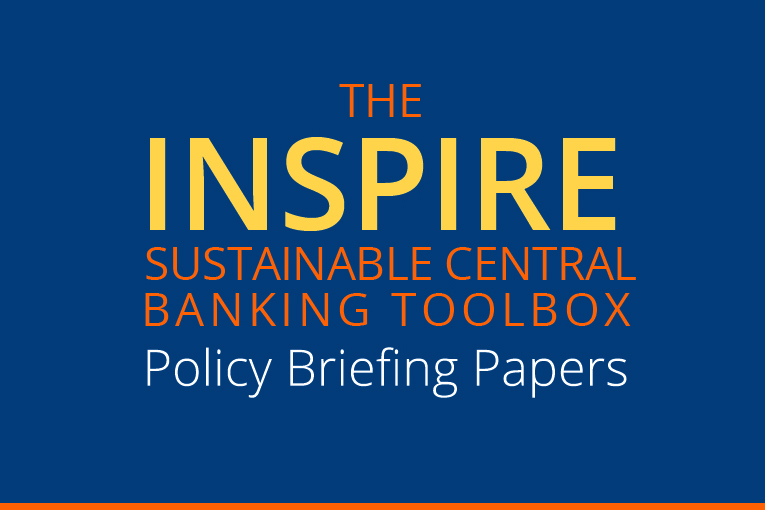Developing a precautionary approach to financial policy – from climate to biodiversity

Download
INSPIRE Central Banking Toolbox – Policy Briefing no. 2
Climate change and biodiversity loss have primarily been approached by financial authorities from the perspective of financial risk. However, environment-related financial risks have particular features that make them less amenable than other types of risk to standard financial risk management approaches.
This paper, the second in the INSPIRE Sustainable Central Banking Toolbox series, proposes an alternative, precautionary approach to financial policy that justifies bolder action in response to environmental-related financial risks.
It considers financial authorities’ tentative steps and possible tools in such a precautionary policy direction – and how these could be scaled up and mainstreamed.
Main messages
- The threats that climate change and biodiversity loss pose to the financial system are primarily seen as resulting from market failures. The role of financial policy has therefore been ‘market-correcting’, based on measuring perceived risks in order to manage them.
- However, environment-related financial risks are characterised by ‘radical uncertainty’. This makes it challenging to calculate them to a level of relevance, precision and robustness that is useful for decision-making and safeguarding the stability of the financial system.
- A precautionary financial policy mindset acknowledges the importance of measurement practices but justifies bolder policy action to address the uncertain and potentially catastrophic nature of environment-related threats.
- While no environmental-financial policies have been deployed explicitly under the precautionary approach, there is now greater awareness and acceptance of the active and pre-emptive role central banks and supervisors should play in resolving environmental risks and impacts.
Recommendations
- Rather than delaying policy action until precise measurement is obtainable, the policymaker should focus on preventative action.
- This means focuses less on quantifying the impacts on individual financial institutions and more on proactively avoiding the macrofinancial and macroeconomic risks associated with ecological tipping points.
- Discouraging the financing of activities that significantly drive climate change and nature loss, or making them subject to punitive capital requirements, are obvious first steps under this approach.
- Negative screening of financing activities is already commonplace as part of Environmental, Social and Governance (ESG) policy, but the mechanisms could be made more effective by integrating them into financial supervision.
- A precautionary approach would seek to increase capital requirements for dirty loans in the form of a dirty loan ‘penalising factor’. This would require identifying either clearly green and/or dirty activities or asset classes or establishing a fully-fledged green and dirty taxonomy
- Central banks and supervisors should also be considering how they can more directly support the massive capital reallocation towards sustainable activities that is required to meet the transition to a net-zero carbon economy, beyond purely financial stability considerations.
This paper is part of a toolbox designed to support central bankers and financial supervisors in calibrating monetary, prudential and other instruments in accordance with sustainability goals as they address the ramifications of climate change and other environmental challenges. The papers have been written and peer-reviewed by leading experts from academia, think tanks and central banks and are based on cutting-edge research, drawing from best practice in central banking and supervision.

